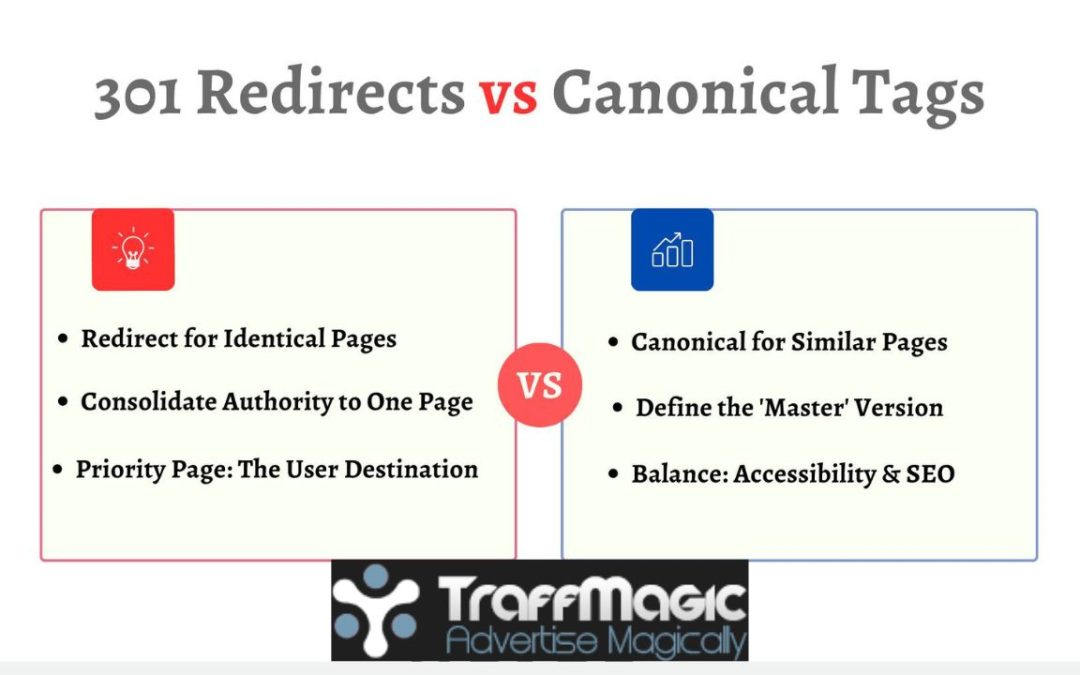When dealing with duplicate content on your website, you have two primary strategies to choose from:
301 redirects and canonical tags. Both methods serve different purposes, and the choice depends on the specific circumstances. Let’s explore each strategy and when to use them:
301 Redirects:
A 301 redirect is a server-side redirect that permanently redirects one URL to another. It tells search engines that the original URL has moved permanently to a new location. Here’s when you should consider using 301 redirects for duplicate content:
Content has moved to a new URL:
If you have a piece of content that has been moved to a different URL, whether it’s due to a website redesign, restructuring, or a change in permalink structure, you should implement a 301 redirect from the old URL to the new one. This ensures that search engines and users are directed to the correct location.
Duplicate content on different domains:
If you have duplicate content on different domains or subdomains, using 301 redirects can consolidate the authority of those URLs into a single, preferred version. It helps avoid dilution of link equity and signals to search engines which version to prioritize.
Merging multiple pages into one:
If you have several pages with similar or duplicate content, and you want to consolidate them into a single, authoritative page, using 301 redirects is an effective way to redirect traffic and preserve SEO value.
Read More About: Understanding E-A-T (Expertise, Authoritativeness, Trustworthiness) and Quality Rater Guidelines for Boosting Your SEO!
Canonical Tags:
A canonical tag is an HTML element that tells search engines which version of a URL is the preferred version when multiple versions of the same content exist. Canonical tags are typically placed in the head section of a webpage. Here’s when you should consider using canonical tags for duplicate content:
Similar content across multiple URLs:
If you have different URLs that serve similar or identical content, but you want to specify a preferred version for search engines, canonical tags can be used. This is particularly useful when you have parameters or tracking codes appended to URLs, causing duplicate content issues. The canonical tag guides search engines to index the preferred version and consolidate ranking signals.
Printer-friendly or mobile-friendly versions:
If you have alternate versions of your webpages, such as printer-friendly or mobile-friendly versions, canonical tags can be employed to specify the original URL as the preferred version.
E-commerce product variations:
When dealing with e-commerce websites, where products may have different URLs based on color, size, or other attributes, canonical tags can be used to point to the main product page, consolidating the ranking signals.
In summary, use 301 redirects when you permanently move or consolidate content to a new URL, while canonical tags are suitable for indicating the preferred version of similar or identical content across multiple URLs. It’s essential to analyze your specific situation and consider factors such as the purpose of the content, user experience, and SEO goals to determine the most appropriate strategy for handling duplicate content on your website.

